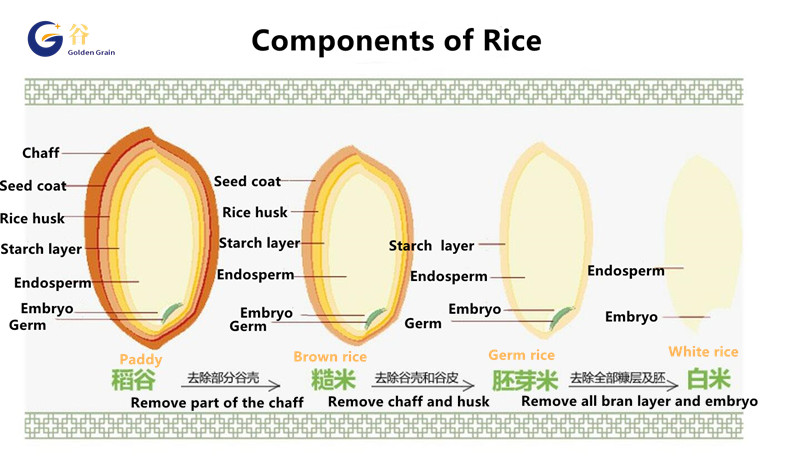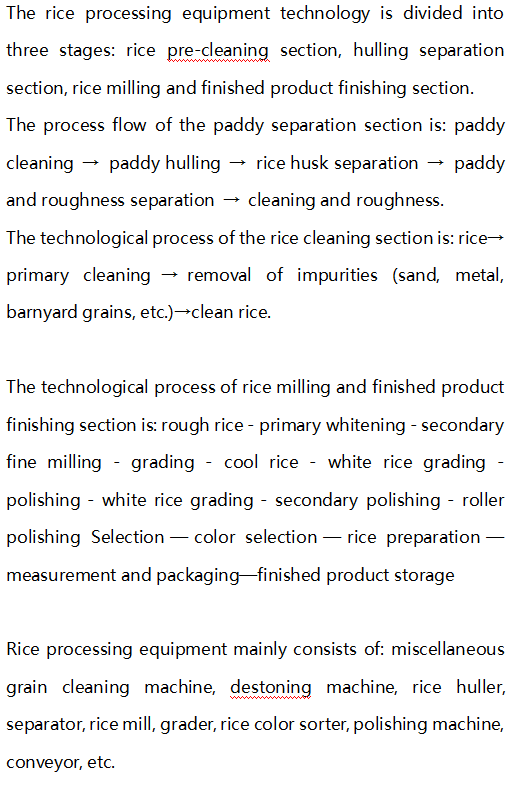Brown rice and white rice: How to choose the staple food that suits you

The process of turning brown rice into white rice mainly involves grinding and polishing. Brown rice is the grain of rice that has removed the outer protective layer of the rice husk, while still retaining the layer of rice bran, aleurone layer, and embryo. In order to obtain white rice, brown rice needs to be rolled by a rice mill to remove the surface husk and flour layer. After each compaction, the color of the rice becomes whiter. After the grinding is completed, it is necessary to use a color sorter to pick out the colored grains and crushed rice grains. After multiple rounds of grinding and polishing, we have formed our common refined white rice, which has a crystal smooth surface and a much whiter color than brown rice.
This process will lead to the loss of some nutrients. For example, the total dietary fiber content in brown rice is 3.29 grams per 100 grams, while the finely processed first grade white rice is only 0.3 grams, which means that the dietary fiber content in brown rice is 11 times that of finely processed rice. Similarly, the content of vitamin B1 in brown rice is higher than that in white rice.
Therefore, although white rice may have better taste and cooking convenience than brown rice, from a nutritional perspective, brown rice has higher nutritional value. So, in the diet, brown rice can be consumed in moderation to obtain more nutrients.
 White rice, also known as rice or rice, is a food made from rice that has undergone processes such as cleaning, hulling, milling, and finished product sorting. Its construction mainly includes the following parts:
White rice, also known as rice or rice, is a food made from rice that has undergone processes such as cleaning, hulling, milling, and finished product sorting. Its construction mainly includes the following parts:
1. Rice germ: This is the small white dot on the head of the rice grain, which is the place for germination and the continuation of life. Rice germ contains the highest nutritional content, accounting for approximately 66% of the total nutritional content.
2. Rice bran: This is the part with white powder on the touch of the hand, and its nutritional value ranks second, accounting for about 29% of the total nutritional content.
3. Endosperm: This is the plump part of the rice grain, which is the starch layer. Its nutritional value is relatively low, accounting for only 5% of the total nutrients.
In the process of rice processing, after removing the rice husk, the obtained brown rice is mainly composed of husk, aleurone layer, embryo, and endosperm. Among them, the aleurone layer and grain germ concentrate most of the nutritional value, such as protein, vitamins, minerals, and active substances, while dietary fiber is mainly concentrated in the grain husk.
Please note that during the processing, white rice may lose some or all of its nutrients due to varying degrees of grinding. For example, the so-called "white and bright high-quality rice" mainly consists of the endosperm, removing most of the high nutritional value parts, and leaving behind a mainly crystal clear appearance.
Overall, the structure of white rice mainly includes rice embryo, rice bran, and endosperm, and the nutritional value of each part varies. When choosing rice, you can choose products with different degrees of grinding according to your own needs to retain more nutrients.
